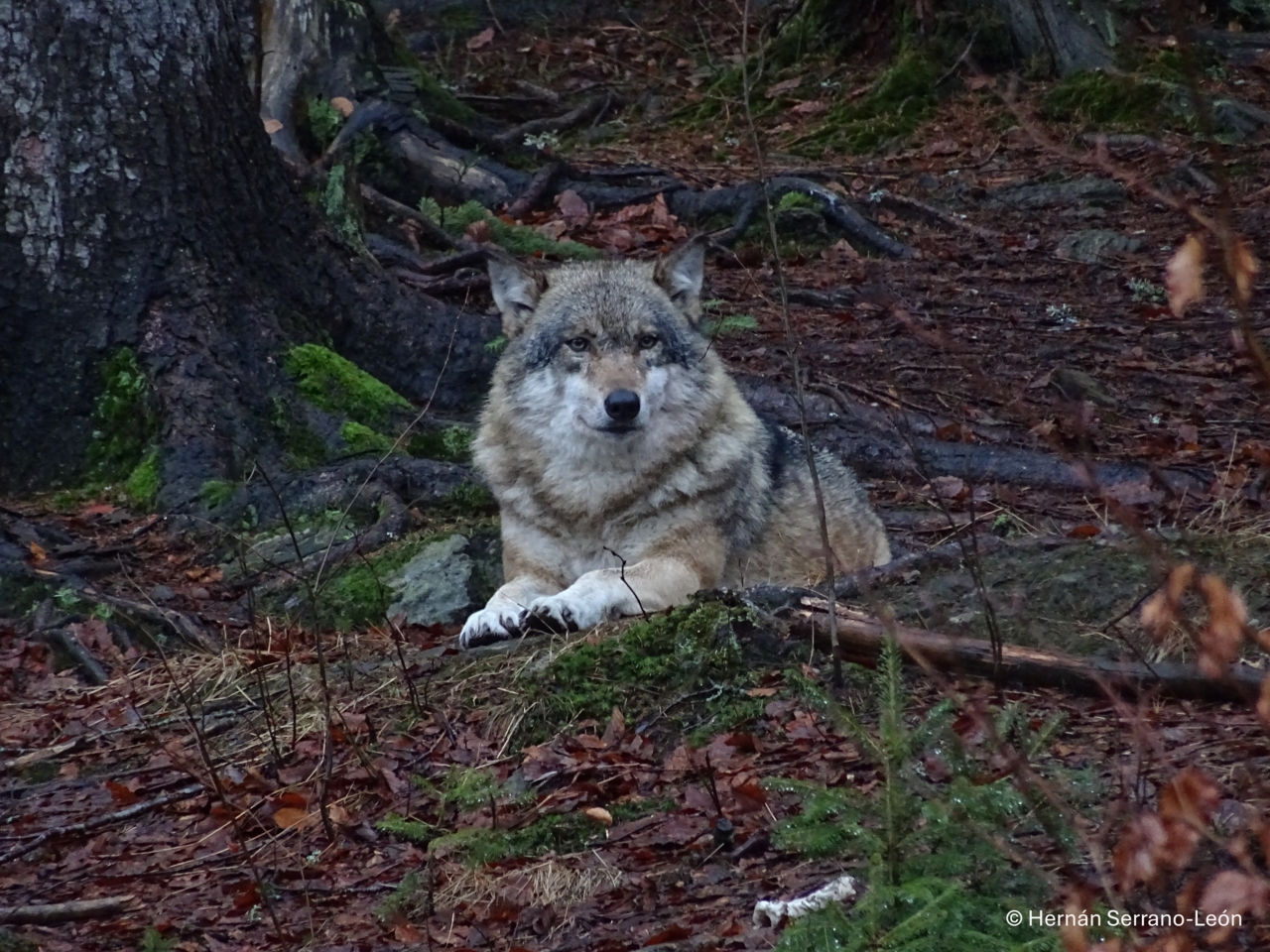Best Practice Knowledge Base
8.4 Wolf

Wolf in Bayerischer Wald, Germany © Hernán Serrano-León
Reintroducing and conserving wolves (Canis lupus) in European forests is a significant forest restoration strategy that reinstates ecosystem health and biodiversity. As apex predators, wolves regulate herbivore populations, preventing overgrazing and allowing vegetation to regenerate. This trophic cascade effect promotes a balanced ecosystem, fostering diverse plant and animal communities. Their presence contributes to restoring natural processes that maintain prey species at healthy numbers, supporting forest regeneration. However, the resurgence of wolf populations has sparked debates and challenges, particularly concerning human-wildlife coexistence and livestock predation. Addressing these challenges requires comprehensive management strategies, including public education and the implementation of preventive measures to ensure the successful integration of wolves.
I. Guidelines
| Nº | Title | Author | Year | Focus Region | Language | Summary | Link |
| 1 | Guidance document on the strict protection of animal species of Community interest under the Habitats Directive | European Commission, Directorate-General for Environment | 2021 | Europe | Multiple languages | Guidelines for the protection of species of interest, especially large carnivores, with a case study for the wolf in Annex III. | https://eur-lex.europa.eu/legal-content/EN/ALL/?uri=PI_COM:C(2021)7301 |
| 2 | The situation of the wolf (Canis lupus) in the European union | Blanco & Sundseth | 2023 | Europe | English | Review of the status of the wolf in Europe, its role in ecosystems and its impact on society, and tools for its management. | https://op.europa.eu/en/publication-detail/-/publication/5d017e4e-9efc-11ee-b164-01aa75ed71a1/language-en |
II. Books or book chapters
| Nº | Title | Author | Chapter | Chapter author | Year | Focus region | Language | Summary | Link |
| 1 | Wolves: Behavior, Ecology, and Conservation | Mech & Boitani | - | - | 2003 | World | English | Ecology and conservation of wolves | https://press.uchicago.edu/ucp/books/book/chicago/W/bo3641392.html |
| 2 | Rewilding European Landscapes | Pereira & Navarro | Bringing Large Mammals Back: Large Carnivores in Europe | Boitani & Linell | 2015 | Europe | English | Describes current populations and conservation approaches for large mammals in Europe, ncluding wolves | https://link.springer.com/book/10.1007/978-3-319-12039-3 |
III. Scientific articles
| Nº | Title | Author | Year | Focus region | Language | Type | Summary | Link |
| 1 | Landscape of fear in Europe: wolves affect spatial patterns of ungulate browsing in Bialowieza Primeval Forest, Poland | Kuijper et al. | 2013 | Poland | English | Observational study | Explores how wolves influence tree browsing and regeneration through effects on ungulates in Bialowieza National Park | https://doi.org/10.1111/j.1600-0587.2013.00266.x |
| 2 | Wolf (Canis lupus) predation and scavenging of reintroduced bison (Bison bison): a hallmark of ecological restoration to boreal food webs | Jung et al. | 2023 | Canada | English | Descriptive study | Documents wolf predation and scavenging on reintroduced bison in Canada, as evidence on their integration into local ecosystems. | https://doi.org/10.1007/s10344-023-01676-0 |
| 3 | Rule-based habitat suitability modelling for the reintroduction of the grey wolf (Canis lupus) in Scotland | Gwynn & Symeonakis | 2022 | Scotland | English | Modelling approach | Ellaboration of a rule-based habitat suitability model for wolves on the Scottish mainland | https://doi.org/10.1371/journal.pone.0265293 |
| 4 | Using Small Populations of Wolves for Ecosystem Restoration and Stewardship | Licht et al. | 2010 | North America | English | Conceptual review | Proposes a new paradigm for wolf conservation focused on ecosystem restoration rather than just wolf recovery | https://doi.org/10.1525/bio.2010.60.2.9 |
| 5 | Fences can support restoration in human-dominated ecosystems when rewilding with large predators | Bull et al. | 2018 | Scotland | English | Modelling approach | Simulating the effect of top-down regulation by wolves on deer, and the use of fences to modify this effect | https://doi.org/10.1111/rec.12830 |
| 6 | Home range and habitat selection of wolves recolonising central European human-dominated landscapes | Vorel et al. | 2024 | Central Europe | English | Descriptive study | Examines wolf spatial ecology in Central Europe, by monitoring habitat use and seasonal movements | https://doi.org/10.1002/wlb3.01245 |
| 7 | Land of wolves, school of shepherds: the importance of pastoral knowledge on co-existence with large carnivores | Durá-Almaña | 2024 | Spain | English | Descriptive study | Importance of pastoral knowledge for reducing conflicts with wolves, especially in places where wolves were reintroduced | https://doi.org/10.1080/26395916.2024.2422910 |
| 8 | Keep the wolf from the door: How to conserve wolves in Europe's human-dominated landscapes? | Kuijper et al. | 2019 | Europe | English | Discussion paper | Discussion on possible management frameworks of the wolf in Europe | https://doi.org/10.1016/j.biocon.2019.04.004 |

